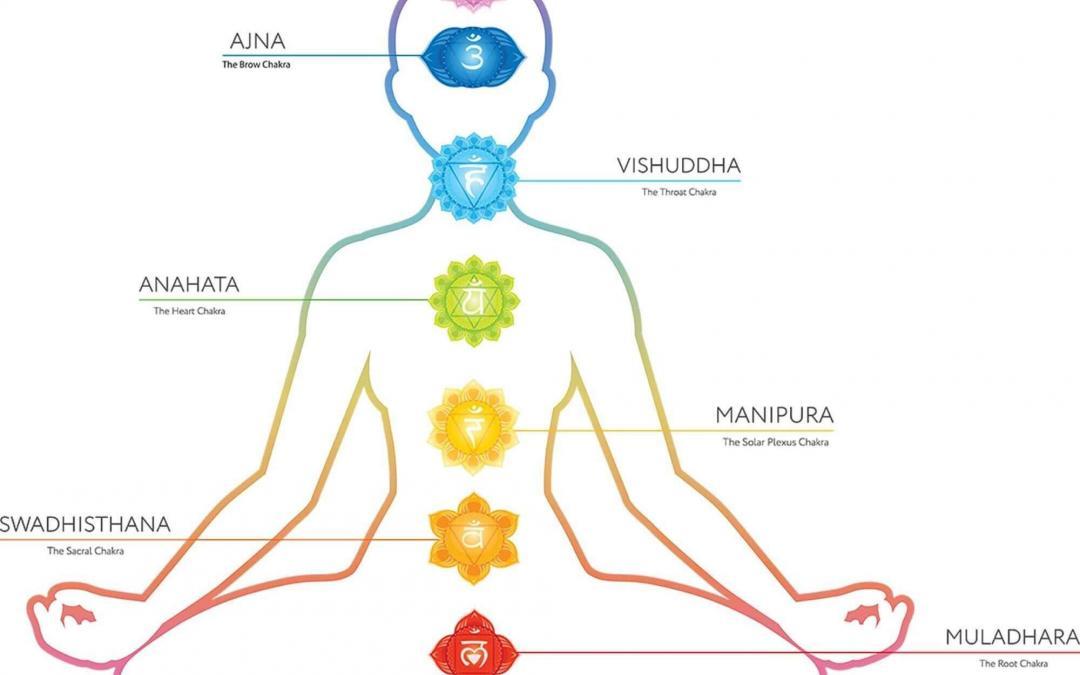
Kundalini Meditation and Seven Chakras
Kundalini Meditation
The word Kundalini derived from Sanskrit language, which literally means coiled. According to Yoga scripture a serpent is coiled at the base of the spine. If we do surgery we cannot find serpent, it carries symbolic meaning. Kundalini Meditation is the process of awakening such dormant energy centers of our body by opening these seven chakras and generating kundalini shakti inside body.
Yoga scripture says at base of the spine (also called Muladhar Chakra) tremendous source of energy lies which is latent or not in awakening form.
Kundalini meditation is technique of awakening that hidden energy for the purpose of reaching spiritual enlightenmentor awakened stage. That energy is subtle and it can be transformed from base of the spine (Muladhar Chakra) to top of the head (Sahasrar Chakra) through spinal cord.
Methods can be different such as Yogasanas (Yogic postures), Pranayama (breathing practice), and Mantras (chanting). By purifying Chakras we can achieve health, happiness and creativity.
Kundalini Yoga asana helps to prepare for the kundalini meditation.
The 7 Chakras to know for Kundalini meditation
Ancient seers realized that human being carried a life force with them. They called them the centers of energy, the 7 Chakras. Chakra is a Sanskrit word that literally means ‘wheel’.
The life force that moves inside of us in spinning form. This spinning energy has 7 centers in our body, which starts from the base of our spine and ends at top of the head.
All Chakras carry positive programme if we purify respective Chakra, as well as, if Chakras becomes impure it can make us physically and psychologically imbalance. Chakras have Beeja mantra (seed sound) and colours.
Muladhar Chakra (Root Chakra)
Muladhar is the first of the seven Chakras; Muladhar Chakra is also the densest of them all. The main color of this Chakra is red which the densest colour of all.
Name muladhar, comes from the words Mula, which means root and Dhara, which means support. This is situated at the base of spine in tailbone area. Muladhar Chakra represents our foundation and feeling of being grounded.
If root Chakra gets balance we can get health and happiness otherwise, we may feel physical as well as psychological problems. The Beeja mantra (main chanting) of Muladhar Chakra is LAM. Repeated chanting of this Mantra can purify this Chakra.
Svadhisthan Chakra (Sacral Chakra)
Svadhisthana is the second of the seven Chakras. Literal meaning of Sanskrit word Svadhithan is ‘the place of the self.’ The main color of this Chakra is orange. This Chakra is situated at about two inches below the navel.
Svadhisthan Chakra represents our interpersonal ability to accept others and new experiences. If Svadhisthan Chakra gets balance we can get control and balance over emotion, emotional well-being.
When we do not balance this chakra we may feel fear of sexual aggression and fear to be serious personality. The Beeja manrta (main chanting) of Svadhithana Chakra is WAM.
Manipur Chakra (Solar Plexus)
Third among seven chakras is Manipur. Manipur literally means ‘city of pearl.’ The position of the Manipura Chakra is in the middle of the abdomen behind the navel. Manipur Chakra associated with our ability to be confident and in control of our lives.
Main colour of this Chakra is yellow. If this Chakra becomes pure we can develop leadership, self-confidence and self-esteem. If this Chakra gets imbalanced, fear of lack of money and feeling of intolerance can be felt. The Beeja mantra (seed sound) of Manipura Chakra is RAM.
Anahata Chakra (Heart Chakra)
The fourth chakra is the Anahata chakra, which translates to ‘unhurt.’ This chakra is where our love, compassion and kindness are empowered. Place of the Anahata Chakra is center of chest just above the heart.
Main colour of this Chakra is green. If this Chakra becomes pure we can be compassionate, lovable, joyful and grateful. If this chakra could not be balanced we can feel fear to love, lack of love, self-criticism and so on. The Beeja mantra (seed sound) of Anahata Chakra is YAM.
Vishuddi Chakra (Throat Chakra)
Fifth out of seven chakras means ‘very pure.’ The place of the Vishuddi Chakra is throat. Main colour of this Chakra is blue. Vishuddi chakra is the centre of science, knowledge and intelligence as well as programme of this chakra is accepting your originality, expressing our authentic voice, speaking our truth and expressing creativity.
If this Chakra becomes imbalance one can feel fear to show creativity to the world. The Beeja mantra (seed sound) of Vishuddi Chakra is HAM. Repeated chanting of this mantra, specific yogasana, pranayama and meditation can make pure of this Chakra.
Agya Chakra (Third Eye Chakra) -Major chakra in Kundalini Meditation
Sixth chakra is the Agya chakra, which translates to ‘command.’ The place of the Agya Chakra is middle of the eye brows. Main colour of this Chakra is indigo. Agya chakra is the centre of intuition. Through the gift of intuition we can internalize the outer world and with symbolic language we can externalize the inner world.
In another, If one can able to active this chakra our lives become transformed. We can get another perception to deal with problems, people, and world. If this Chakra becomes imbalance one can feel fear to trust own heart. The Beeja mantra (seed sound) of Agya Chakra is OM.
Sahasrar Chakra (Crown Chakra)
The seventh chakra is the crown chakra and which is referred to as the thousand-petal lotus chakra. This Chakra is located at the crown of the head. Energy from the Muladhar Chakra progresses upward to the Sahasrara which connects us with the universal energy.
It is associated with wisdom, understanding and comprehension. The main colour of this Chakra is purplish white. The Beeja mantra (seed sound) of Sahasrar Chakra is OM. When the energy from the root chakra transform upward to the sahasrara Chakra, we can experience mystical oneness with everyone and everything in nature.
In the Sahasrar Chakra there is serenity, joy, celebration and deep peace about life. One can feel selflessness and one can feel deep peace followed by ecstasy. At this stage we can realize the meaning of life.


